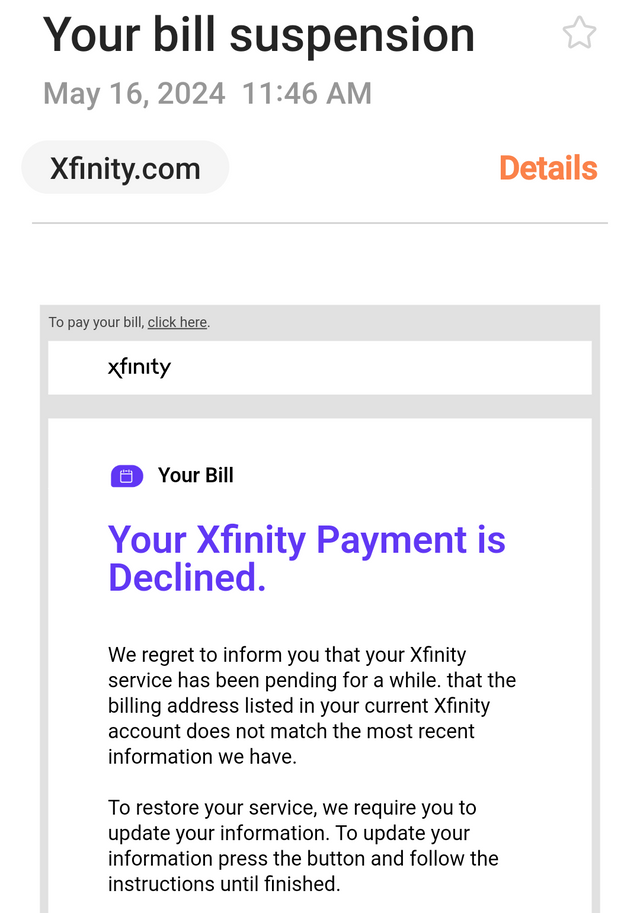How to Report Xfinity Phishing Emails: A Comprehensive Guide
Are you receiving suspicious emails claiming to be from Xfinity? Don't fall victim to phishing scams! This comprehensive guide will walk you through how to identify, avoid, and report these fraudulent emails, protecting your personal information and your Xfinity account. Phishing attempts are becoming increasingly sophisticated, so staying informed is crucial.
What is Xfinity Phishing?
Xfinity phishing emails are fraudulent messages designed to trick you into revealing sensitive information like your username, password, credit card details, or social security number. These emails often mimic the official Xfinity branding, using logos and language designed to appear legitimate. However, a closer look often reveals subtle clues that expose the scam.
Identifying Xfinity Phishing Emails: Red Flags to Watch For
Before clicking any links or providing information, scrutinize the email for these warning signs:
- Suspicious Sender Address: Check the sender's email address carefully. Legitimate Xfinity emails will typically come from addresses ending in "@xfinity.com" or similar official domains. Beware of slight variations or addresses using free email services like Gmail or Yahoo.
- Generic Greetings: Legitimate Xfinity communications usually address you by name. Emails with generic greetings like "Dear Customer" or "Valued User" should raise suspicion.
- Urgent or Threatening Language: Phishing emails often create a sense of urgency, threatening account suspension or other negative consequences if you don't act immediately.
- Suspicious Links: Hover your mouse over any links before clicking. The actual URL displayed in the bottom left corner of your browser should match the link's purpose. Be wary of shortened links or URLs that look slightly off.
- Grammar and Spelling Errors: Legitimate companies usually employ professional editors. Poor grammar, spelling mistakes, and awkward phrasing are common in phishing emails.
- Requests for Personal Information: Xfinity will rarely ask for sensitive information via email. If you receive an email requesting your password, credit card details, or social security number, it's highly likely a scam.
- Unusual Attachments: Avoid opening any attachments from unknown senders. These attachments can contain malware that infects your computer.
How to Report a Suspicious Xfinity Email:
If you suspect you've received a phishing email impersonating Xfinity, take these steps:
-
Do Not Click Any Links or Open Attachments: This is crucial to prevent malware infection.
-
Forward the Email to Xfinity: Xfinity has a dedicated email address for reporting phishing attempts. Forward the suspicious email to abuse@xfinity.com. This allows Xfinity to investigate and take action against the perpetrators.
-
Report to the Federal Trade Commission (FTC): The FTC is a US government agency that investigates consumer fraud. Reporting the phishing attempt to the FTC helps them track these scams and prevent future incidents. You can report it online at .
-
Change Your Xfinity Password (If Necessary): If you're concerned you may have accidentally revealed your password, change it immediately through the official Xfinity website.
Protecting Yourself from Future Phishing Attempts:
- Keep your antivirus software up-to-date.
- Be cautious of unsolicited emails.
- Verify the sender's identity before clicking any links or providing information.
- Regularly review your Xfinity account activity for any unauthorized access.
- Enable two-factor authentication on your Xfinity account for added security.
By following these steps, you can significantly reduce your risk of becoming a victim of Xfinity phishing scams and protect your valuable information. Remember, if something seems too good to be true or feels suspicious, it probably is. Always err on the side of caution.

